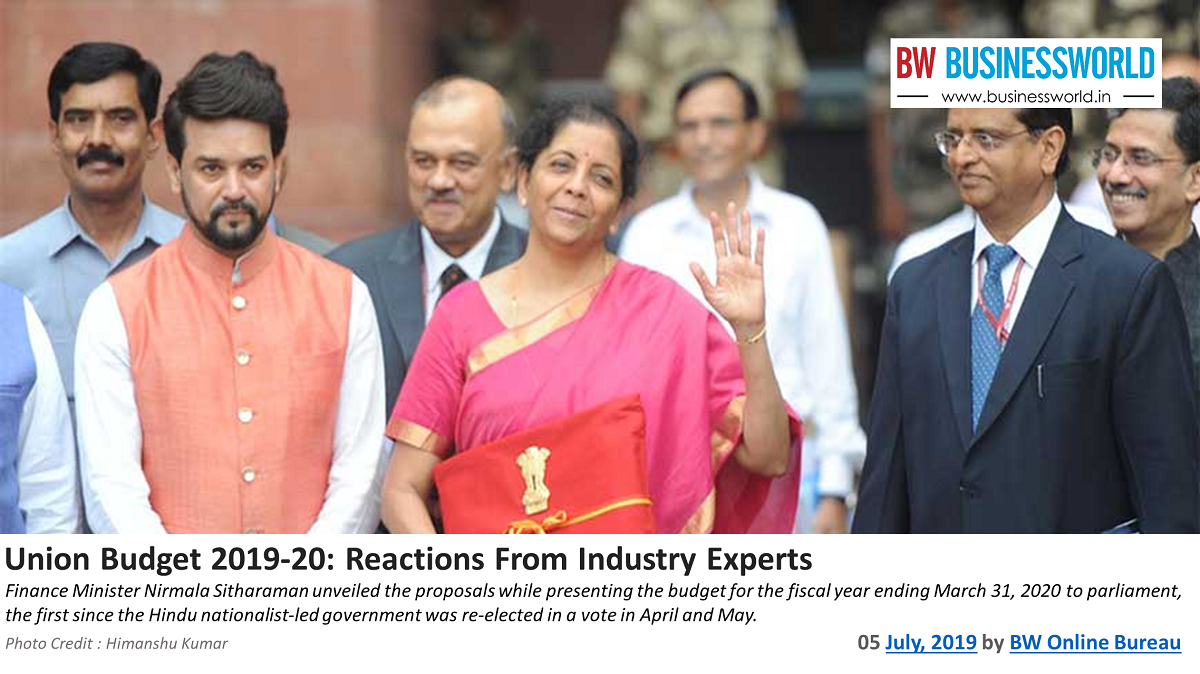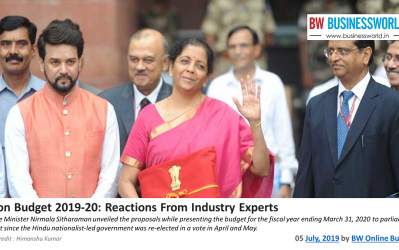
Prime Minister Narendra Modi’s government on Friday proposed giving foreign investors a bigger role in India’s giant insurance and aviation sectors to help reverse weakening growth and investment that threatens to take the shine off its recent landslide election victory.
Finance Minister Nirmala Sitharaman unveiled the proposals while presenting the budget for the fiscal year ending March 31, 2020, to parliament, the first since the Hindu nationalist-led government was re-elected in a vote in April and May.
Garima Kapoor, Economist, And Vice-President, Elara Capital, Mumbai
“The budget strikes a reasonable balance between addressing the objective of inclusivity and laying the path for a $5-trillion economy by focusing on infrastructure spending, incentivising affordable housing, providing growth capital for PSU banks and signalling support for sound NBFCs.”
“Additional areas of spending have been created not at the cost of a higher fiscal deficit. The fiscal deficit has been reduced by 10 bps to 3.3% in FY20, which is heartening.”
Jagannadham Thunuguntla, Sr. VP & Head Of Research (Wealth), Centrum Broking Limited, Mumbai
“…While we need to await SEBI regulations regarding how much time will be given to these companies to meet with minimum public shareholding norms, the overhang of this requirement of off-loading of promoter shareholding can have a significant impact on the markets and the specific stocks. The regulator needs to provide sufficient time to meet this requirement so as to not over-flood the markets with stake sales by promoters.”
Swetank Shekhar, Founder & CSO, E3 Retail
“In the first budget of second term of the new government, it has made it easy for FII and FDI to invest more funds in the country by lowering their risk. Retail sector which contributes significantly to the growth impetus has been given a fillip with the easing of local sourcing norms for single brand retailers; enabling the MSMEs; easing Angel Tax for start-ups; and addressing the need to fill the skill gap that exists in areas like AI, Big Data, Robotics and others. Young India is going to be a major supplier of skilled manpower to the world, and more importantly to an merging technology-savvy country like India, and hence arming the youth with new age skills will boost its probability of achieving its goal to take the country from the current 3 trillion economy (almost) to a 5 trillion economy. Incentives for faster adoption of EVs is one of the heartening aspects of the budget, for a country battling with rising air pollution and health concerns, which are likely to emerge as major cause of loss of manpower in the coming future.”
Anagha Deodhar, Economist, ICICI Securities, Mumbai
“Agriculture sector is a major employment generator in the country and is currently reeling under stress. Hence, Sitharaman’s focus on agriculture and the rural sector is a welcome step.”
“Moreover, the proposals to make India an electric car manufacturing hub, a large investment in quality higher education, focus on building infrastructure, efforts to widen tax net, incentives for start-ups, etc. are big positives. She also proposed to provide 700 billion rupees for PSU bank recapitalisation and raised the disinvestment target to 1.05 trillion rupees, which will be taken positively by the market.”
“On the downside, the proposal to increase minimum public shareholding in listed companies to 35% could negatively impact some companies. If budgets in the coming years keep focusing on the right areas, the target of making India a $5-trillion economy in the next 5 years looks achievable.”
“There was a widespread expectation of a stimulus to combat the current slowdown. The budget did not announce any stimulus. On the contrary, (it) raised some of the taxes. Also, the fiscal deficit target for FY20 was revised down to 3.3%, which is surprising.”
Rajiv Singh, CEO, Stock Broking, Karvy, Hyderabad
“The nominal GDP growth assumption is realistic and can be achieved by giving a boost to infrastructure. The economy has enough strength to achieve this growth rate, however, the risk to this forecast would be from a financial market turmoil or an increase in commodity prices like oil which may result in a significant depreciation of the rupee.”
“The increase in public shareholding from 25% to 35% is a good step for the deepening of capital markets. It also means that many companies will need to increase their public shareholding, mostly by selling of promoter stake or additional equity issuance. The requirement to meet 35% would result in companies needing to offer approximately 1 trillion rupees to the public.”
“The additional supply of equity should keep a lid on valuations, but in the longer term, (it) should help in getting more retail money in equity markets.”
Vivek Gupta, Partner And National Head – M&A/ PE TAX, KPMG, New Delhi
“The move to increase minimum public shareholding for listed companies from 25% to 35% must be implemented carefully. Timing, applicability, etc (need) to be closely evaluated. We don’t want this to be another ‘forced sale’. (This is a) good opportunity for institutional capital and funds.”
Anil Talreja, Partner, Deloitte India, Mumbai
“The proposed announcement to increase the minimum shareholding threshold from 25% to 35% is a move to increase public participation in listed entities, thereby fortifying the fundamentals of governance.”
“One would need to evaluate once the fine print is available (as the FM mentioned that SEBI will be issuing the requisite circulars) as there would be some clarifications expected, including on grandfathering of existing situations, a movement to the desired threshold.”
———-<><><> ———-
Published in:


